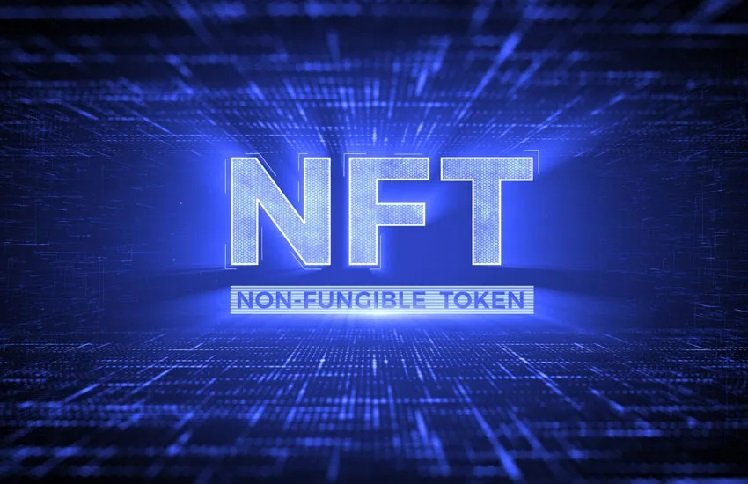In recent years, the convergence of decentralized finance (DeFi) and non-fungible tokens (NFTs) has emerged as one of the most exciting developments in the blockchain space. This fusion, often referred to as DeFi NFTs, represents a groundbreaking shift in how digital assets and financial services interact. In this comprehensive article, we will delve into what DeFi NFTs are, how they work, their benefits, and the challenges they face, providing you with an in-depth understanding of this innovative domain.
Understanding DeFi and NFTs
Before diving into DeFi NFTs, it’s essential to grasp the fundamentals of DeFi and NFTs individually.
What is DeFi?
Decentralized Finance, or DeFi, refers to a broad range of financial applications built on blockchain technology, primarily Ethereum. Unlike traditional financial systems, DeFi operates without intermediaries such as banks or brokers. Instead, it relies on smart contracts to execute and enforce financial transactions in a decentralized and trustless manner. Key DeFi applications include decentralized exchanges (DEXs), lending platforms, and yield farming protocols.
What is an NFT?
A Non-Fungible Token (NFT) is a type of digital asset that represents ownership or proof of authenticity of a unique item or piece of content, often using blockchain technology. Unlike cryptocurrencies like Bitcoin or Ethereum, which are fungible and can be exchanged on a one-to-one basis, NFTs are unique and cannot be exchanged on a like-for-like basis. They are commonly used for digital art, collectables, and other forms of digital media.
What Are DeFi NFTs?
DeFi NFTs are a novel class of NFTs that integrate with decentralized finance protocols. They combine the uniqueness and ownership aspects of NFTs with the financial functionalities of DeFi. This integration enables NFTs to have additional financial features such as staking, lending, and yield generation.
How Do DeFi NFTs Work?
DeFi NFTs operate by leveraging the smart contract capabilities of DeFi platforms. Here’s a breakdown of how they function:
- Tokenization of Assets: Traditional assets or NFTs are tokenized on the blockchain. These tokenized assets can then be used within DeFi protocols.
- Integration with DeFi Protocols: DeFi NFTs can be integrated with various DeFi protocols, allowing them to participate in activities such as liquidity provision, staking, and lending. For instance, an NFT representing a piece of digital art could be staked in a DeFi protocol to earn rewards.
- Smart Contracts: The underlying smart contracts govern the interactions between DeFi -NFTs and the DeFi ecosystem. These contracts automatically execute financial transactions and enforce rules without the need for intermediaries.
- Yield Generation: DeFi -NFTs can generate yield or returns by participating in DeFi activities. For example, users might earn interest by lending their NFTs or receive rewards for providing liquidity.
Benefits of DeFi NFTs
The integration of DeFi with NFTs offers several advantages, including:
1. Enhanced Liquidity
DeFi -NFTs increase liquidity for digital assets by allowing them to be used in various DeFi applications. For instance, NFTs that are traditionally illiquid can be staked or lent out, unlocking their value and making them more useful in the DeFi ecosystem.
2. Increased Utility
By incorporating DeFi functionalities, NFTs gain additional use cases beyond mere ownership. This added utility can enhance the overall value and appeal of NFTs, attracting a broader audience and increasing their market potential.
3. Innovative Financial Instruments
DeFi NFTs enable the creation of innovative financial instruments that combine the uniqueness of NFTs with the financial features of DeFi. This innovation can lead to new investment opportunities and revenue streams for both creators and investors.
4. Greater Accessibility
DeFi NFTs democratize access to financial services by eliminating intermediaries and allowing anyone with an internet connection to participate. This accessibility can lead to increased financial inclusion and greater participation in the digital economy.
Challenges Facing DeFi NFTs
Despite their potential, DeFi -NFTs also face several challenges:
1. Regulatory Uncertainty
The regulatory landscape for DeFi NFTs is still evolving. Governments and regulatory bodies are grappling with how to classify and regulate these new financial instruments. This uncertainty can create legal risks and affect the adoption and development of DeFi NFTs.
2. Security Risks
DeFi protocols and NFTs are subject to security risks, including smart contract vulnerabilities and hacking attempts. Ensuring the security of DeFi -NFTs requires robust coding practices and regular audits to prevent potential exploits.
3. Scalability Issues
As with many blockchain technologies, scalability is a concern for DeFi NFTs. High transaction fees and network congestion can impact the efficiency and cost-effectiveness of DeFi NFT transactions.
4. Market Volatility
The value of DeFi NFTs can be highly volatile, influenced by factors such as market sentiment, technological developments, and regulatory news. This volatility can affect the stability and attractiveness of DeFi NFT investments.
The Future of DeFi NFTs
The future of DeFi -NFTs is promising, with ongoing developments and innovations likely to address current challenges and expand their use cases. Key trends to watch include:
1. Increased Interoperability
Future DeFi NFTs are expected to benefit from increased interoperability between different blockchain networks and DeFi protocols. This interoperability will enhance their functionality and allow for more seamless interactions across various platforms.
2. Integration with Traditional Finance
As DeFi continues to mature, there is potential for greater integration between DeFi -NFTs and traditional financial systems. This integration could lead to new financial products and services that bridge the gap between traditional and decentralized finance.
3. Improved Security Measures
Advancements in security technologies and practices will likely enhance the safety of DeFi NFTs. Enhanced security measures, such as more rigorous smart contract audits and better risk management strategies, will help mitigate risks and build trust in the DeFi NFT ecosystem.
4. Broader Adoption
As awareness and understanding of DeFi NFTs grow, their adoption is expected to increase. More creators, investors, and users will likely explore the opportunities offered by DeFi -NFTs, leading to a more vibrant and diverse market.
Conclusion
DeFi NFTs represent a transformative development at the intersection of decentralized finance and non-fungible tokens. By combining the unique attributes of NFTs with the financial functionalities of DeFi, these innovative assets offer new possibilities for liquidity, utility, and financial innovation. While challenges such as regulatory uncertainty and security risks persist, the future of DeFi NFTs holds great potential. As the ecosystem continues to evolve, DeFi -NFTs are poised to play a significant role in shaping the future of digital finance and asset ownership.
In summary, DeFi NFTs are more than just a trend—they are a fundamental shift in how we perceive and interact with digital assets. As they continue to develop and gain traction, they promise to redefine the boundaries of what is possible in both the financial and digital art worlds.


